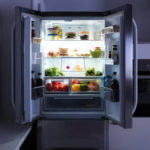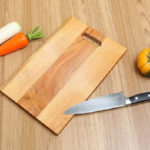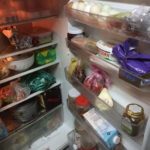Mitzi Baum, the CEO of STOP Foodborne (USA), said: “When food is left out for hours, it can become a breeding ground for harmful bacteria (and potentially deadly) such as Staphylococcus aureus, Campylobacter, E. coli, and Salmonella – making people seriously ill.”
According to Patrick Guzzle, the Vice President of Food Science at the National Restaurant Association (USA), “The most important thing for people to be aware of is time, temperature, and cleanliness” when it comes to storing leftover food.
And here are some tips that experts have shared for food preservation.
Two hours is a crucial mark
Between cooking or serving food and socializing at the table, people often overlook or are unaware that the food has been left out for too long. Baum said: “After the food comes out of the oven, you have about two hours to enjoy it and then refrigerate or freeze the leftovers.”
If you plan to keep the food out for more than two hours, make sure to maintain the temperature. “Keep hot food warm using a hot plate or keep cold food cold by placing a dish on ice,” she added.
According to Kimberly Baker, the Director of the Food Safety and Food System Program at Clemson University Cooperative Extension (USA), “perishable food left out without temperature control should be discarded after two hours, and after one hour if left outdoors on a day above 90°F. This is because bacteria can grow rapidly in warm environments.”
She further stated, “This is important because pathogens, if present, will multiply rapidly at temperatures above 40°F and most rapidly at ambient temperature ranging 70-110°F.”
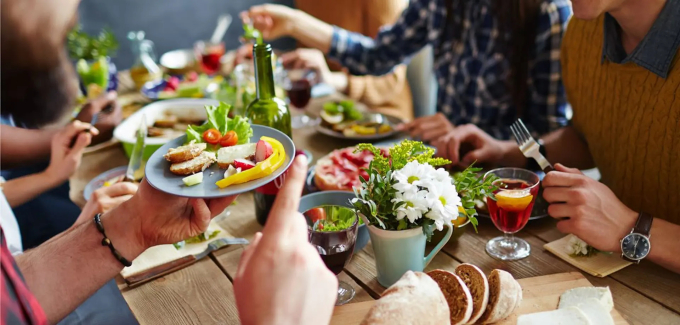
Cool down the food before putting it in the fridge… but not for too long
Sometimes, your food is still too hot to put it in the fridge. Keith Schneider, a food safety professor in the Department of Food Science and Human Nutrition at the University of Florida (USA), explained, “One of the biggest mistakes is putting hot things in the fridge. The fridge is really good at maintaining temperature, but it’s really bad at cooling things down.”
Placing a warm or hot food container into the fridge can negatively affect the refrigerator’s temperature. Schneider explained, “If you have a large amount of food in a large container, it can increase the overall temperature of the fridge.”
This can not only raise the temperature of the fridge but also render your leftovers unsafe. Schneider said, “If you put everything in hot or if you put everything in large containers that are still holding temperature, then the bacteria start to ferment.”
The solution? Use wide and shallow containers. Baum advised, “Storing leftovers in a shallow container will cool them down more quickly in the fridge.”
Use appropriate containers for leftovers
Food should not be left uncovered in the fridge. Instead, use suitable containers or bags to properly store them.
Baker suggests, “Leftovers should be stored in airtight containers, zip-top bags, or wrapped in aluminum foil or plastic wrap to keep the leftovers contained and prevent them from cross-contaminating other foods during storage.”
Using airtight containers serves a dual purpose. “Covering leftovers in an airtight container helps keep out bacteria and other odors from infiltrating the fridge,” Baum noted.
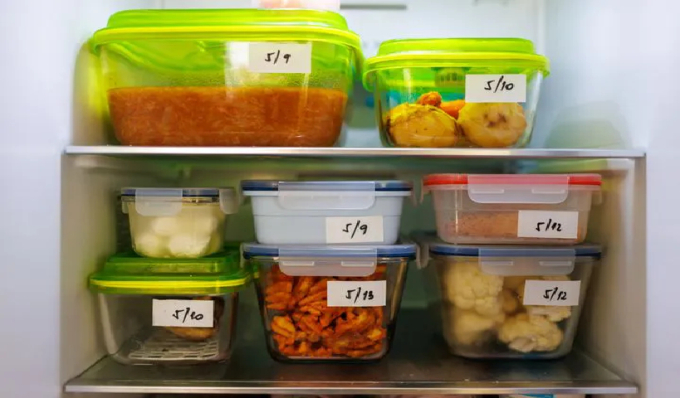
Label your leftovers
An easy step that can make a big difference is to label the food with the date. This eliminates any doubts or confusion about when you put the food in the fridge.
Gill Boyd, a chef and culinary arts instructor at the Culinary Education Institute (USA), said, “Dating and labeling when storing food, in this way, you know how long it’s been in the fridge.” Knowing the date also ensures that you don’t consume something that is past its expiration date. Baker added, “This will help identify what the food is and accurately determine when it needs to be discarded.”
Know the temperature of your fridge
Baker said, “One of the most important safety measures that people should follow to save leftovers is to ensure that the fridge is set at 40°F or lower. A cold fridge means you don’t have to worry about your leftovers going bad ahead of time. Leftovers stored at 40°F and below can be kept for up to seven days. If the fridge temperature is unknown, then leftovers should only be kept for three to five days or be frozen.”
Food that doesn’t reach the required temperature can lead to illnesses and pose a risk for bacteria growth that can make you or your family sick.
Avoid reheating food multiple times
One way to avoid getting sick from eating leftovers is to minimize the number of times you reheat them. If you take out leftovers, heat them up again, then put them back in the fridge, and repeat this process, it can create a breeding ground for bacteria.
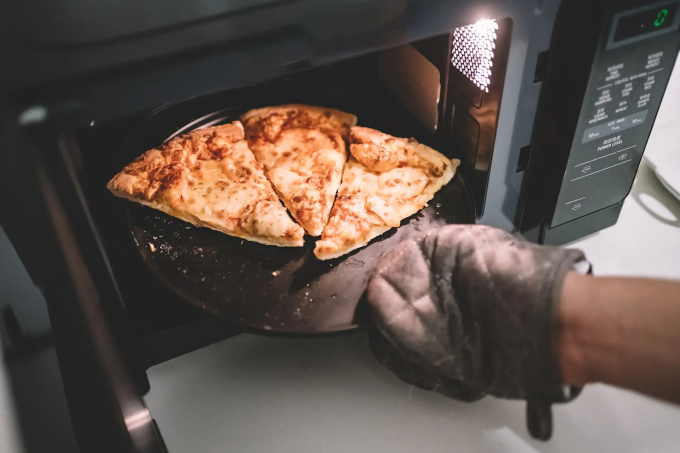
According to Schneider, “When food goes through the cooling-softening cycle, all those bacteria that are there can start growing and fermenting. Bacteria can lead to a lot of things, such as streptococcal toxic shock syndrome. If you continue to let it warm up over several days, the likelihood of getting sick increases.”
Source: Phụ nữ mới
More Useful Advice for Homemakers (Part 2)
Have you heard of the surprisingly easy tips to make cooking and household chores simpler? White radish eliminates the acrid taste of salted meat, adding alum to raw shrimp helps soften it, and adding cold water when frying eggs can make them crispy – these are just a few of the tricks to make your life easier.
Refrigerator‘>Uncovering 11 Surprising Ways to Utilize a Refrigerator
8 Common Mistakes People Make with Cutting Boards
Are you using your cutting board correctly? Many Vietnamese households rely on cutting boards in their kitchen, but not everyone knows how to use them properly, especially when it comes to wooden cutting boards. Check out these 8 mistakes to avoid when using a cutting board to ensure both hygiene and safety for everyone in your family.
Is Refrigerated Leftovers Linked to an Increased Risk of Cancer?
Dr. Lam Van Man, Head of Research, Development and Technology Transfer Department of the Institute of Safety Food, has warned of the risk of food poisoning when reheating leftovers from the refrigerator. But what should we be aware of when it comes to the possibility of these leftovers causing cancer? Here, we explore what the experts have to say on the matter and offer some tips for safe eating.



























